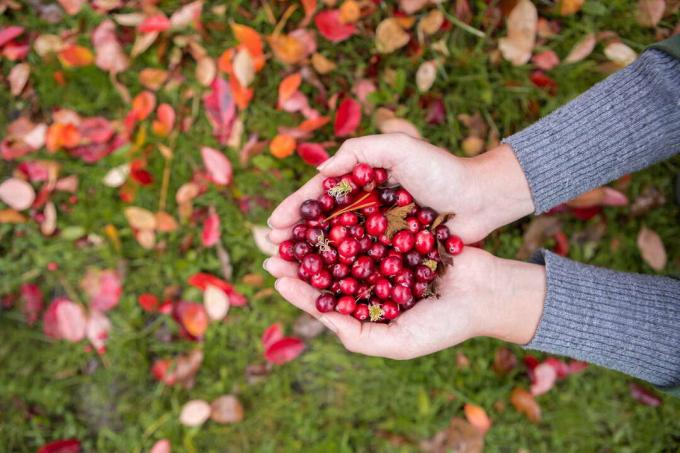Cranberries are not only trendy because of their healthy fruits. They are also an eye-catcher as a ground cover. We show the best way to plant them.
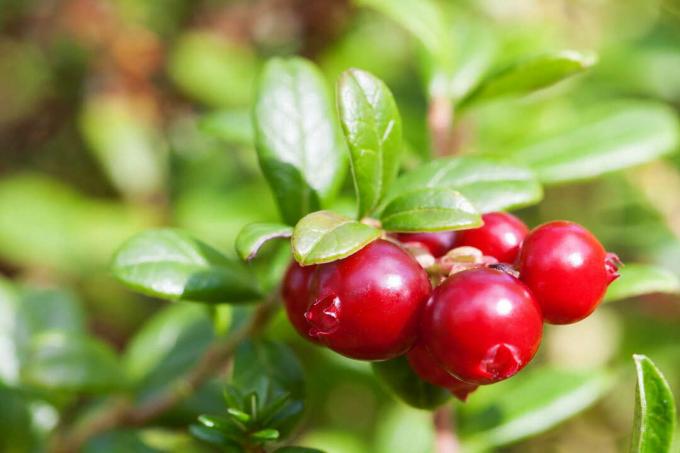
While it has been grown commercially in the USA and Canada for some time, the cranberry (Vaccinium macrocarpon) has only recently gained greater prominence in Europe. No wonder - after all, it tastes like the local lingonberry (Vaccinium vitis-idaea) very similar. The growing conditions are also similar, after all, the cranberry belongs to the same plant genus as the cultivated blueberry (Vaccinium corymbosum) and the lingonberry. We'll tell you how you can imitate the conditions in the forest in your garden and plant cranberries yourself.
contents
- Cranberries: origin and description
- Cranberry varieties: an overview
-
Planting cranberries: site conditions
- How do you find out the pH of your soil?
- Planting cranberries: instructions
- Harvest and store cranberries
Cranberries: origin and description
The cranberries, which come from the northeast of North America, owe their name to a crane (engl. crane) reminiscent flower shape. Cranberries form tendrils and are only about 25 cm high. For this reason, they are often used as ground cover. As such, they look great with their beautiful flowers and red, very healthy berries. Cranberries form dense roots, shallow underground. The leaves of the cranberry plant are evergreen, feel a bit leathery and waxy, and only reform every few years. In autumn, leaf and flower buds develop on the side shoots for the next year.
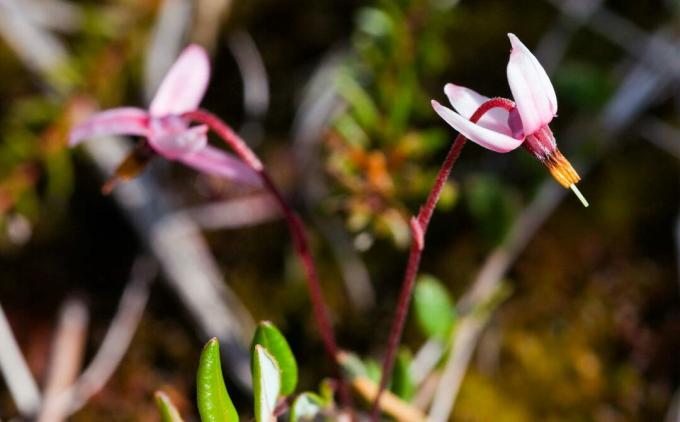
Cranberry varieties: an overview
There are numerous types of cranberry to choose from in specialist garden shops and online tree nurseries. We have had good experiences with the following three types and are therefore happy to recommend them:
‚Early Black‘: Early ripening variety with dark red to slightly blackish berries; very aromatic, medium-sized fruits; very frost hardy
‚Stevens‘: Fast growing and very richly bearing variety; recommended for drier soils and harsher climates
‚Bergman‘: High-yielding variety with medium-sized, dark red fruits; grows flat and forms a lot of leaves - therefore ideal as a ground cover
Planting cranberries: site conditions
As their membership of the heather family (Ericaceae) suggests that cranberries have a preference for natural heathland. Sandy and bog soils belong to the original habitats of the cranberries, although they do not tolerate waterlogging or drought over long periods of time.
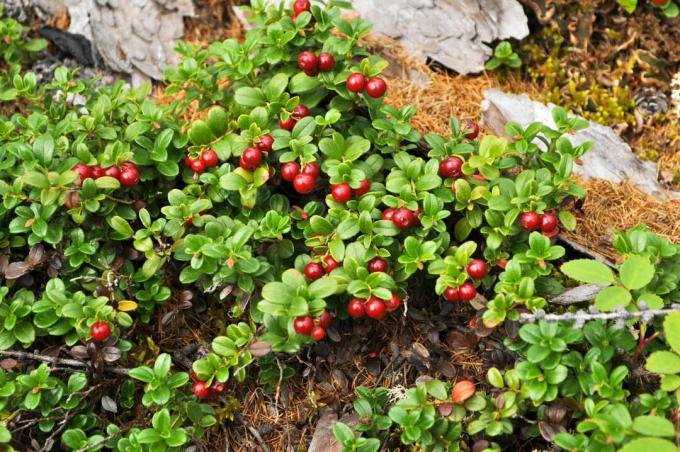
Cranberries like sunny to slightly shady locations with a soil pH of 5. Only forest soils normally have such a low pH value. But there are a few tricks you can use to acidify the garden soil a bit, which means lowering the pH from typically 6 to 7 to 5. In the case of very lime-rich soil with a pH of 8 or higher, however, these tricks will not work in the long term. After a while, the soil compensates for the acidification and is then no longer suitable for cranberries under these conditions. For garden soils with a pH value of 7.5 or higher, it may be more effective to plant cranberries in plant troughs or pots with acidic rhododendron soil.
tip: To create good location conditions for your cranberry, you can use a high-quality organic soil like our Plantura Organic universal soil Mix with sand and bark humus, pine needles, grape pomace or similar material.
How do you find out the pH of your soil?
- You can buy so-called pH meters including a certain substance in garden shops. This substance gets mixed with a little bit of soil and causes a chemical reaction. You can then read off the pH value of the tested soil using a color chart.
- Alternatively, you can buy small amounts of ten percent hydrochloric acid in pharmacies. If this is dripped onto a piece of soil with a pipette, a chemical reaction also occurs. The higher the lime content of the soil, i.e. also the pH value, the more it bubbles. If many bubbles form, the soil is not suitable for cranberries. If none are formed, however, it is very suitable. Light foaming reveals that cranberries can be planted with appropriate soil preparation.
In order to obtain a meaningful result and to exclude application errors, we recommend that you carry out both tests at two to three places on the area planned for the cranberries.

The relatively hardy cranberries are usually not endangered by frost. The plants are only sensitive during early frosts in autumn or late frosts during budding and are therefore happy to receive warm protection made of fleece, cracked material or similar materials.
Planting cranberries: instructions
Cranberries are planted in spring from March to May or in autumn from September to mid-October. Before planting, however, the first thing to do is to prepare the ground. The soil of the entire area that is to be planted is dug to a depth of about 15 to 20 cm. This soil can then be used for other beds such as raised beds. It needs to be replaced because it is not acidic enough. This 15 to 20 cm deep soil layer is now covered with a mixture of sand and rotted bark mulch or bark humus, rotted compost, needle litter and acidic rhododendron soil filled up. Sand is added in a proportion of around 10 percent. Now it's time to plant. For a quick ground cover that suppresses weeds, a planting distance of 20 to 30 cm has proven itself. Cranberries form a lot of runners and spread well. This is another reason why they are well suited as ground cover.
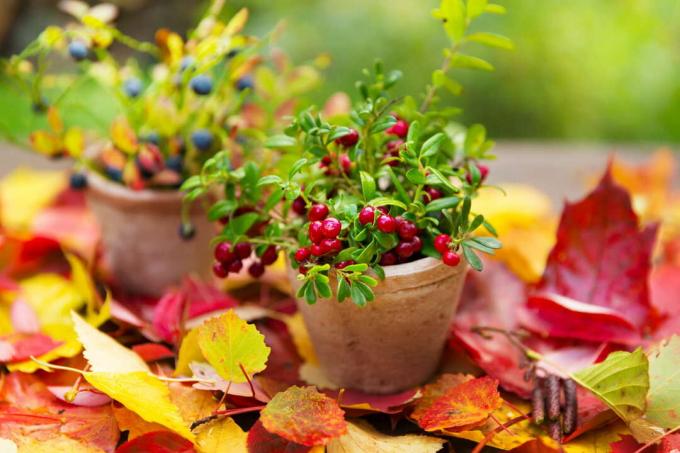
After planting, you should water the young cranberry plants abundantly. Then cover the ground with bark mulch. The decomposition of the bark also acidifies the soil. However, you should not use bark mulch too excessively, as the bacteria that decompose the bark mulch fix nitrogen. In the worst case, this can lead to a no longer optimal nitrogen supply with the cranberry.
Harvest and store cranberries
The cherry-red berries, about 1 to 2.5 cm in size, are harvested from the beginning of September to the end of October. If you don't harvest the cranberries, they will grace the plant until spring. But that would be a shame, after all, cranberries contain a lot of iodine and many vitamins. The berries are fresh and can be stored in the refrigerator for up to two months, but are not suitable for consumption in large quantities. Thanks to their natural preservatives (e.g. benzoic acid), however, cranberries can be processed very well into juices, compotes, jams or the like without sugar.
